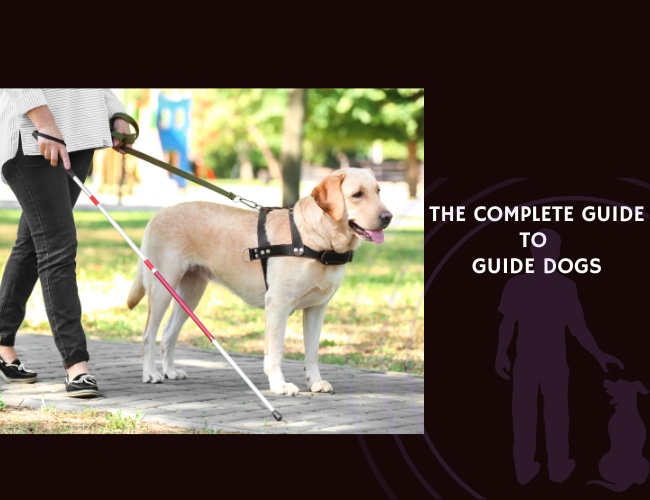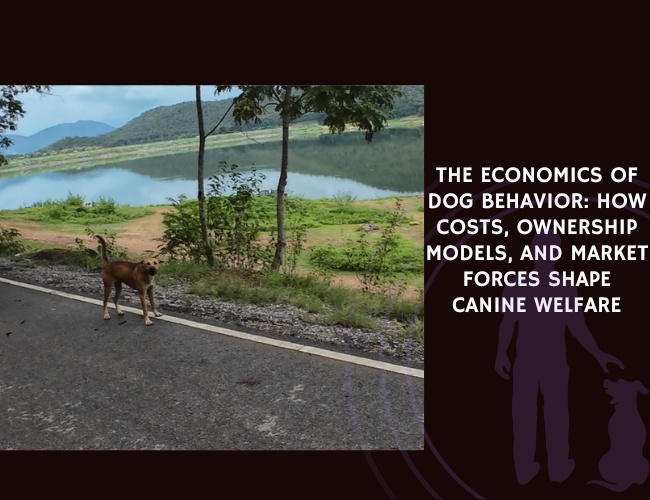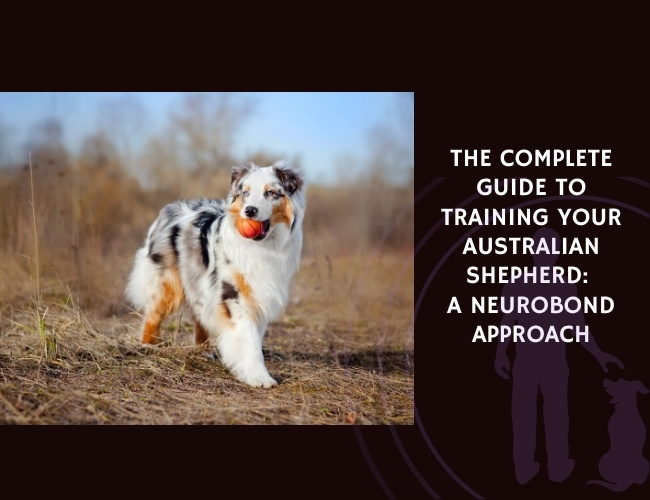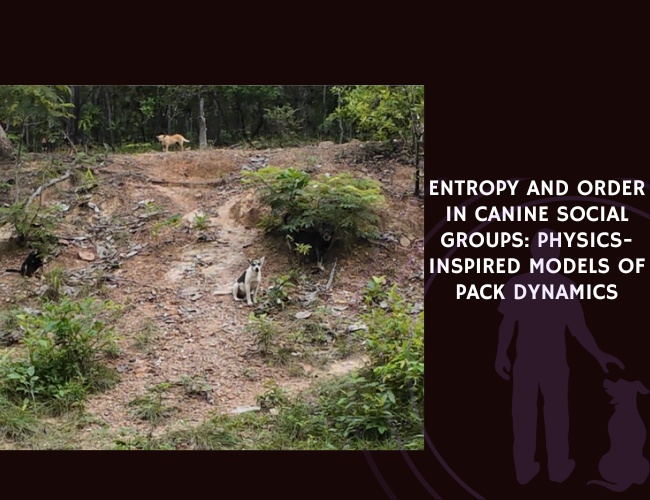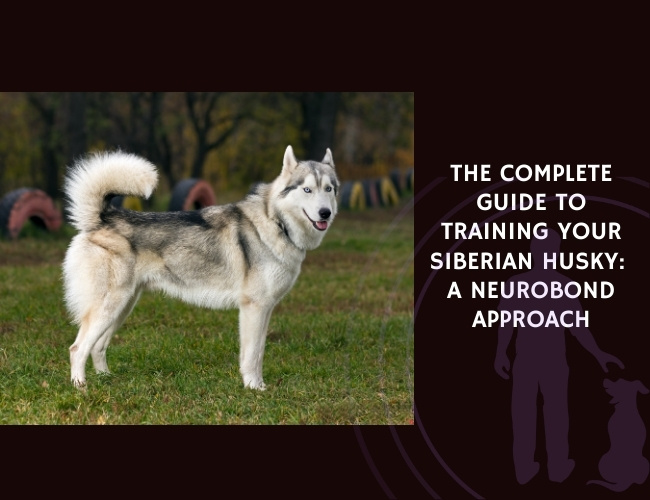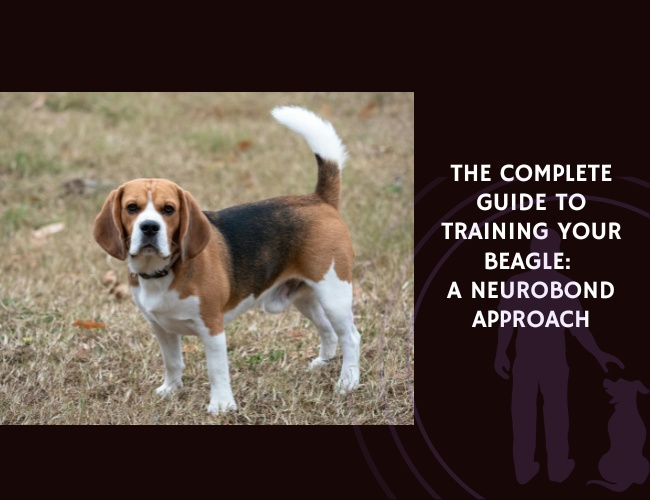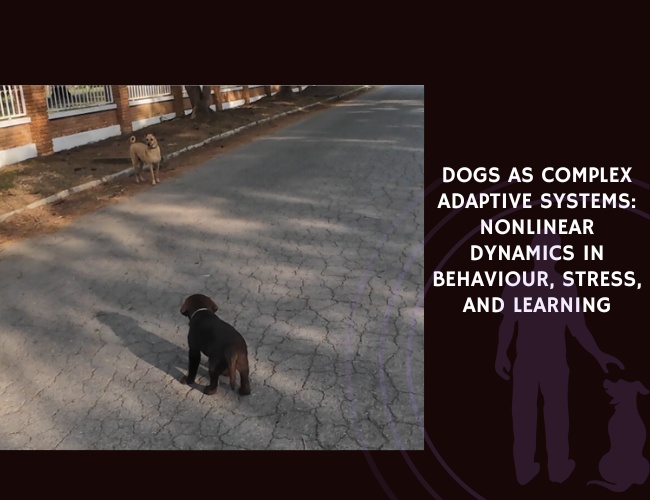Introduction: A Legacy of Partnership and Independence
Imagine navigating the world with unwavering confidence, knowing that beside you walks a devoted companion whose entire purpose centers on your safety and independence. This is the profound reality for thousands of individuals who partner with guide dogs—remarkable canines that represent one of humanity’s most successful interspecies collaborations.
The bond between a guide dog and their handler transcends typical pet ownership, creating a working partnership built on mutual trust, communication, and an almost telepathic understanding. These extraordinary dogs don’t just guide; they empower, liberate, and transform lives. Did you know that the modern guide dog movement began over a century ago, born from compassion for soldiers blinded in World War I? Today, these four-legged heroes continue to break down barriers and open up worlds of possibility for people with visual impairments.
Let us guide you through the fascinating world of guide dogs—from their rigorous selection and training to the profound partnerships they form. Whether you’re considering a guide dog, supporting someone who has one, or simply curious about these remarkable animals, you’ll discover how these canine professionals master complex skills while maintaining the loving nature that makes dogs our most cherished companions. 🐾
Historical Origins & Evolution: From Battlefield Compassion to Global Movement
The Birth of Systematic Training
The story of guide dogs begins not in ancient times, as you might expect, but in the relatively recent past. While isolated examples of dogs assisting blind individuals date back centuries, the first systematic attempt emerged around 1780 at ‘Les Quinze-Vingts’ hospital in Paris. Here, forward-thinking caregivers recognized that dogs could be more than companions—they could be trained assistants.
However, the true revolution came from an unlikely source: the devastation of World War I. Dr. Gerhard Stalling, observing the thousands of soldiers returning from battlefields with vision loss, opened the world’s first guide dog school in Oldenburg, Germany, in August 1916. This wasn’t a small experimental program—within years, the school was training up to 600 dogs annually, proving that guide dog partnerships could be replicated systematically and successfully.
The Movement Spreads Internationally
The American Awakening: The guide dog movement might have remained confined to Europe if not for Dorothy Harrison Eustis, an American dog trainer living in Switzerland. Her 1927 article in The Saturday Evening Post, describing the German training schools, captured American imagination and sparked a revolution in accessibility.
Morris Frank’s Journey: After reading Eustis’s article, Morris Frank, a young blind American, wrote to her saying, “Give me a dog and I’ll show the world what we can do together.” This partnership led to the founding of The Seeing Eye in 1929, America’s first guide dog school. Frank and his German Shepherd, Buddy, became ambassadors for the guide dog movement, demonstrating their capabilities across the nation.
Global Expansion: The success stories multiplied, and soon guide dog schools emerged across the globe. Each country adapted training methods to local conditions, creating a rich tapestry of approaches united by a common goal: independence through partnership. Today, guide dog organizations operate on every inhabited continent, each contributing unique insights to our understanding of these remarkable partnerships.
Character & Behavior: Understanding Your Guide Dog’s Inner World
The Guide Dog Temperament Profile
Not every dog can become a guide dog—in fact, only about 50-70% of puppies bred for this purpose ultimately succeed. You might wonder what makes a successful guide dog different from your beloved family pet. The answer lies in a unique combination of traits that must balance perfectly.
Intelligence with Selective Disobedience: Guide dogs must be smart enough to learn complex commands and navigation patterns, yet possess the judgment to disobey a command that would endanger their handler. This “intelligent disobedience” represents one of the most sophisticated cognitive abilities we ask of any animal. When you command “forward” at a street crossing, your guide dog must assess traffic conditions and refuse if it’s unsafe—a decision that could save your life.
Calm Confidence in Chaos: Picture navigating Times Square during rush hour. For most dogs, this sensory overload would trigger either excitement or anxiety. Guide dogs maintain what researchers call “environmental robustness”—the ability to remain focused and calm despite distractions. This doesn’t mean they’re robotic; rather, they’ve learned to filter sensory input, prioritizing their handler’s safety above interesting smells, sounds, or sights.
Social Selectivity: Your guide dog must be friendly enough to accompany you everywhere—restaurants, offices, public transport—without seeking attention from others. They exhibit what behaviorists term “social neutrality,” acknowledging other people and animals without engaging unless permitted. This selective social behavior requires sophisticated impulse control that develops through careful training and maturation.
Cognitive Abilities That Set Them Apart
Recent research reveals that successful guide dogs demonstrate specific cognitive patterns that distinguish them from both pet dogs and other working dogs. These mental abilities form the foundation of their remarkable capabilities.
Problem-Solving Without Perseveration: When faced with obstacles, guide dogs must quickly devise alternative solutions. Research shows that dogs who perseverate less—meaning they don’t get stuck repeating unsuccessful strategies—are more likely to succeed in guide dog programs. If a familiar route is blocked, your guide dog seamlessly calculates an alternative, demonstrating flexible thinking that rivals that of young children.
Sustained and Flexible Attention: Unlike detection dogs who focus intensely on specific scents, guide dogs must maintain what scientists call “divided attention.” They simultaneously monitor the walking surface for obstacles, track overhead hazards, remember learned routes, and respond to handler commands. This multitasking ability develops through specialized training but requires innate capacity that not all dogs possess. 🧠
Training & Education: The Making of a Professional Partner
The Puppy Raising Foundation
The journey from playful puppy to professional guide begins in carefully selected volunteer homes. You might be surprised to learn that future guide dogs spend their first 12-18 months not in training facilities, but with families who provide crucial early experiences.
The Neonatal Touch: During the first two weeks of life, when puppies are essentially helpless, gentle handling begins their acclimation to human touch. Puppy raisers perform simple exercises—holding paws, touching ears, cradling bodies—that seem minor but establish fundamental comfort with human handling that will be essential throughout their working life.
The Critical Socialization Window: Between 3 and 14 weeks of age, puppies enter what scientists call the “sensitive period for socialization.” This isn’t just about meeting people; it’s about experiencing the full spectrum of environments they’ll encounter as working dogs. Puppy raisers introduce them to escalators, elevators, various floor surfaces, crowds, and unusual sounds—all while ensuring these experiences remain positive and confidence-building.
Building Environmental Confidence: Your future guide dog learns that vacuum cleaners aren’t monsters, that thunder is just noise, and that the world, despite its complexity, is navigable and safe. Puppy raisers strike a delicate balance: exposing puppies to diverse experiences while protecting them from trauma that could create lasting fears. One negative experience during this critical period can derail a promising guide dog candidate.
Formal Training Protocols
The Transition to Professional Training: Around 14-18 months, puppies return to training schools for formal education. This transition, while emotionally challenging for puppy raisers, marks the beginning of intensive professional preparation. The dogs enter a structured program that typically lasts 4-6 months, though this varies based on individual progress.
Positive Reinforcement Foundations: Modern guide dog training relies heavily on positive reinforcement techniques. Trainers use food rewards, praise, and play to shape behaviors, creating dogs who work not from fear but from enthusiasm. You’d observe trainers celebrating small successes—a properly executed curb stop, successful navigation around an obstacle—building the dog’s confidence alongside their skills.
Task-Specific Skill Development: The actual guide work training follows a careful progression:
- Straight-line walking with proper pace and position
- Stopping at curbs and steps
- Navigating around obstacles (including overhead hazards)
- Finding specific locations (doors, elevators, empty seats)
- Intelligent disobedience training
- Traffic awareness and assessment
Each skill builds upon previous learning, creating a comprehensive navigation toolkit. Trainers work in increasingly complex environments, starting in quiet residential areas and progressing to busy urban centers.
Handler-Dog Team Integration
The Foundation of Matching: Not every guide dog suits every handler. The matching process considers multiple factors: walking speed, lifestyle, living environment, and even personality compatibility. Research confirms that successful partnerships share activity levels and complementary traits. An athletic handler needs a dog who enjoys long walks, while someone with a sedentary lifestyle requires a calmer companion.
Initial Team Training: When you’re matched with your guide dog, you’ll spend 3-4 weeks in intensive training together. This isn’t just about learning commands; it’s about building trust, understanding each other’s communication style, and developing the subtle, almost telepathic connection that characterizes successful guide dog teams. You’ll practice routes, learn your dog’s signals, and develop the confidence to trust their judgment—even when it contradicts your own. 🧡

The Matching Process & First Days Together: Your Journey to Partnership Begins
Pre-Matching Assessment Process
Before you ever meet your future guide dog, extensive evaluation ensures the best possible match. This isn’t a casual process—guide dog schools invest significant resources in understanding your unique needs, lifestyle, and personality to identify your ideal canine partner.
Comprehensive Lifestyle Evaluation: You’ll complete detailed questionnaires covering every aspect of your daily life. These aren’t invasive—they’re essential for finding a dog whose natural tendencies align with your needs. Questions explore your walking speed (leisurely stroller or power walker?), typical daily routes (suburban sidewalks or busy city streets?), living situation (apartment with elevator or house with stairs?), and work environment (quiet office or bustling retail space?). The assessment also delves into your social life—do you frequently attend concerts, restaurants, or sporting events where your dog needs exceptional focus despite distractions?
Physical and Orientation Assessment: Instructors evaluate your physical capabilities, not to exclude but to match appropriately. Your natural walking gait, strength for handling different dog sizes, and any additional disabilities all factor into matching decisions. They’ll observe how you navigate with your current mobility aid, understanding your confidence level and orientation skills. This helps determine whether you need a dog with strong initiative or one who responds better to detailed direction.
Personality and Emotional Profiling: Perhaps surprisingly, personality matching proves as crucial as physical compatibility. Are you naturally assertive or more soft-spoken? Do you thrive on routine or embrace spontaneity? Your emotional resilience, handling of frustration, and communication style all influence which dog will best complement your personality. An anxious handler might be matched with a naturally confident dog, while a very assertive person might work better with a dog who needs clear, strong direction.
The Actual Matching Day
The day you meet your guide dog marks a pivotal life moment, yet few resources prepare handlers for the emotional and practical realities of this experience. Understanding what to expect can transform anxiety into anticipation.
The Introduction Protocol: You won’t simply be handed a leash and wished good luck. The introduction follows careful choreography designed to set the foundation for success. Typically, you’ll be seated in a quiet, familiar room when your instructor brings in your dog. The first meeting is deliberately low-key—no pressure for instant bonding. Your dog might approach immediately or hang back, assessing you just as you’re assessing them. Instructors remain present, interpreting your dog’s body language and coaching you through initial interactions.
Emotional Complexity: You might expect instant love, that magical moment when eyes meet and hearts connect. Reality is more complex. Some handlers describe immediate recognition—”I knew she was mine the moment she walked in.” Others feel uncertainty, even disappointment. Sarah, a teacher from Michigan, recalls: “Zeus, my yellow Lab, completely ignored me for the first hour. He was more interested in sniffing the doorframe than acknowledging my existence. I was devastated, thinking I’d waited two years for a dog who didn’t even like me.”
Physical Introductions: The first physical interactions focus on comfort and positive associations. You’ll offer treats, practice basic commands the dog already knows, and begin establishing your voice as a source of guidance. Instructors guide you through proper handling techniques—how to hold the leash, position your body, and project calm confidence even if you’re feeling overwhelmed. These early moments establish patterns that will define your working relationship.
First 72 Hours Together
The first three days with your guide dog establish foundations that influence your entire partnership. This hour-by-hour guidance helps you navigate this crucial period with confidence.
Day One – Establishing Territory (Hours 1-8): Your focus is creating positive associations with your presence. Keep interactions brief but frequent—5-minute sessions every hour rather than prolonged bonding attempts. Practice saying your dog’s name with warmth and confidence. Offer meals by hand, establishing yourself as the provider. Avoid overwhelming your dog with affection if they seem reserved; respect their processing time. By evening, attempt a short, successful walk in a familiar, quiet area—even just to the end of your hallway and back. Success matters more than distance.
Day One – First Night (Hours 8-24): The first night often proves challenging. Your dog might whine, pace, or seem restless. This isn’t rejection—it’s normal adjustment. Place their bed where they can see you but maintain some independence. If they cry, a calm “quiet” command followed by patient waiting, then praise when they settle, establishes expectations. Sarah continues: “Zeus cried for three hours that first night. I sat on the floor near his bed, not touching him, just reading aloud so he could hear my voice. Around 2 AM, he finally sighed and fell asleep. That sigh felt like acceptance.”
Day Two – Building Routine (Hours 24-48): Introduce structured routine immediately. Dogs find comfort in predictability, especially during transitions. Morning relief, breakfast, grooming, short work session, rest, lunch, another work session, dinner, evening relief, quiet time, bed. Keep work sessions under 15 minutes, focusing on simple successes. Practice basic commands your dog knows well, building your communication style. Introduce the harness without working—let them wear it during positive activities like meals. By day two’s end, attempt a slightly longer walk, perhaps around your building or yard.
Day Three – Expanding Confidence (Hours 48-72): By day three, patterns emerge. You’re learning your dog’s signals—how they indicate need for relief, their energy patterns, their stress signals. Gradually increase working session length, but maintain frequent success opportunities. Introduce mild challenges: a different route, passing another dog at distance, navigating around an obstacle. Watch for breakthrough moments—the first tail wag directed at you, the first time they check in with you without prompting, the first successful initiative they take in guide work. Sarah’s breakthrough came day three: “We were practicing indoor navigation when Zeus suddenly stopped me from walking into a half-open door I hadn’t noticed. He looked back at me, and I swear he was proud. That’s when we became a team.”
Common Early Challenges
Understanding common adjustment challenges helps you respond appropriately rather than panic when issues arise. These situations are normal and manageable with proper strategies.
The Disinterested Dog: Some dogs seem aloof initially, more interested in the environment than their new handler. This isn’t personal rejection—it’s often a coping mechanism for the transition. Continue regular, positive interactions without forcing affection. Use their primary motivators (food, play, praise) to build positive associations. Most “disinterested” dogs are actually overwhelmed and need time to process. Within a week, most begin seeking interaction once they feel secure.
The Anxious Bonder: Conversely, some dogs become immediately clingy, showing distress when you leave their sight. While this might feel flattering, it can interfere with working independence. Build confidence through brief, successful separations—step out of view for seconds, then return before anxiety peaks. Gradually increase duration. Reward calm behavior during separation, not the reunion, to avoid reinforcing anxiety.
Testing Behaviors: Around days 4-7, many dogs test boundaries. They might ignore known commands, pull on the harness, or show selective hearing. This isn’t regression—it’s actually progress. Your dog feels secure enough to test relationship dynamics. Respond with calm consistency. Don’t take it personally or doubt the match. This phase typically resolves within a week once expectations are clearly established.
Handler Doubt: Perhaps the most common challenge is your own uncertainty. “Did they match me with the right dog?” “Other teams seem more connected.” “What if I’m not good enough for this dog?” These doubts are nearly universal. Remember that guide dog schools have decades of matching experience. Trust the process. Most handlers report that genuine bonding takes 3-6 months, with deep partnership developing over the first year.
Real Handler Stories
Sarah and Zeus – From Indifference to Inseparable: “Those first days, I questioned everything. Zeus seemed to actively avoid me, preferring literally anyone else in the training center. Our instructor kept saying, ‘Give it time,’ but I was heartbroken. Day four, we were practicing street crossings when a car ran a red light. Zeus threw his body across mine, physically blocking me from stepping into danger. He wasn’t ignoring me—he was working through his own transition while still protecting me. By week two, he started sneaking his head onto my lap during breaks. By month two, he’d follow me everywhere, even off-harness. Now, three years later, we can communicate with the slightest gesture. He anticipates my needs before I realize them. That initial distance? It was Zeus learning to trust, just as I was. The bond we have now is deeper because we both had to work for it.”
Marcus and Jade – The Overwhelming Beginning: “Jade, my black Lab, was the opposite of aloof. From moment one, she was velcroed to my side, whining if I shifted position. I thought this meant we’d bonded instantly, but our instructor explained she was anxious, not bonded. We worked on confidence building—short separations, independent decision-making exercises, rewarding calm behavior. It took three weeks before Jade could relax when I left the room. But that intensive early work built incredible trust. She learned I’d always return, and I learned to read her emotional needs. Now she’s the most confident, focused guide dog I could imagine. Those challenging first days were actually building the foundation for exceptional partnership.”
Technology Integration: Modern Tools Enhancing Traditional Partnerships
GPS Apps and Guide Dog Navigation
The integration of GPS technology with guide dog navigation represents a revolutionary advancement in independent mobility. You’re not replacing your dog’s intelligence with technology—you’re combining two powerful tools for unprecedented navigation freedom.
Complementary Navigation Systems: Your guide dog excels at immediate environmental navigation—avoiding obstacles, finding doors, stopping at curbs. GPS apps provide macro-navigation—route planning, destination finding, orientation confirmation. Successful handlers describe this as “GPS tells me where to go, my dog tells me how to get there safely.” Popular apps like Lazarillo, Soundscape, or BlindSquare provide audio navigation that doesn’t interfere with your ability to hear your dog’s signals or environmental sounds.
Practical Integration Techniques: Experienced handlers develop smooth workflows combining both tools. Before leaving home, you might plan your route using GPS, identifying major turns and landmarks. During travel, periodic GPS checks confirm you’re on track while your dog handles the moment-to-moment navigation. At intersections, GPS confirms which way to turn while your dog ensures safe crossing. This partnership means you’re never solely dependent on either technology or dog—redundancy increases safety and confidence.
Training Your Dog with Technology: Initially, your dog might react to GPS callouts with confusion or distraction. Introduce technology gradually during familiar routes where your dog can succeed despite the new audio input. Use consistent volume levels and voice choices so your dog learns to distinguish GPS audio from relevant environmental sounds. Some handlers train their dogs to pause at GPS announcement points, creating natural check-in moments during routes.
Smart Harnesses and Monitoring Devices
Emerging technology is transforming the traditional guide dog harness into an intelligent interface that provides unprecedented insights into your dog’s working life and wellbeing.
Biometric Monitoring Systems: New harness-integrated sensors track your dog’s vital signs during work—heart rate, temperature, respiration. This data reveals stress patterns you might miss through behavior alone. You might discover your dog’s stress spikes in specific environments, allowing targeted desensitization work. Temperature monitoring prevents overheating during summer work, while heart rate patterns can indicate developing health issues before clinical symptoms appear.
Working Hours and Intensity Tracking: Smart harnesses log working duration, distance traveled, and effort intensity. This objective data helps you balance your dog’s workload, ensuring adequate rest. You might discover your Tuesday routine is significantly more demanding than you realized, prompting schedule adjustments. During retirement planning, this data provides objective evidence of when your dog’s working capacity begins declining.
Communication Enhancement Features: Some smart harnesses include subtle communication tools—gentle vibrations that reinforce verbal commands for dogs with developing hearing issues, or LED indicators that make your team more visible during night work. These features don’t replace traditional communication but provide backup channels that enhance safety and effectiveness.
Virtual Training Support
The pandemic accelerated development of remote training support systems that now provide ongoing education long after initial team training ends.
Video Consultation Platforms: When behavioral challenges arise, video consultations with certified guide dog trainers provide immediate support without travel requirements. You can demonstrate the specific issue in your actual working environment, receiving tailored solutions. Trainers can observe subtle body language and handling patterns that might contribute to problems, offering corrections that prevent minor issues from becoming major challenges.
Online Learning Communities: Virtual platforms connect guide dog handlers globally, creating peer support networks previously impossible. You can join breed-specific groups, connect with handlers facing similar challenges, or find mentors who’ve navigated your specific concerns. These communities provide emotional support and practical problem-solving strategies tested in real-world conditions.
Digital Training Resources: Comprehensive video libraries demonstrate advanced techniques, troubleshooting strategies, and enrichment activities. Unlike static written guides, video resources show precise timing, body positioning, and voice modulation crucial for effective communication. Interactive webinars allow real-time questions, while recorded sessions provide reference materials you can revisit as needed.
Apps for Health and Behavior Tracking
Sophisticated applications now help you monitor and optimize your guide dog’s health and working performance through systematic data collection and analysis.
Comprehensive Health Logs: Apps like DogLog or PetDesk allow detailed health tracking—medications, vet visits, weight trends, dietary changes. Pattern recognition features identify correlations you might miss: perhaps your dog’s occasional digestive issues correlate with specific treats, or energy dips follow certain medications. This data proves invaluable during veterinary consultations, providing objective health histories that support accurate diagnosis.
Behavioral Pattern Analysis: Behavior tracking apps help identify trends in your dog’s working performance. You might note daily energy levels, response to commands, or distraction incidents. Over time, patterns emerge—maybe your dog works best with morning feeding schedule adjustments, or monthly hormone cycles affect female dogs’ concentration. This systematic observation transforms intuitive understanding into actionable insights.
Predictive Health Algorithms: Advanced apps now use artificial intelligence to predict potential health issues based on logged patterns. Changes in bathroom habits, appetite, or activity levels trigger alerts suggesting veterinary consultation. While not replacing professional veterinary care, these tools help you advocate more effectively for your dog’s health needs.
Devoted. Liberating. Historic.
Companions beyond pets. Guide dogs embody a partnership rooted in trust, communication, and shared purpose. Their role extends past guidance, granting independence and dignity to those they serve.
History forged progress. From battlefield compassion in World War I to global training schools, the guide dog movement grew from necessity into a worldwide mission of accessibility and empowerment.
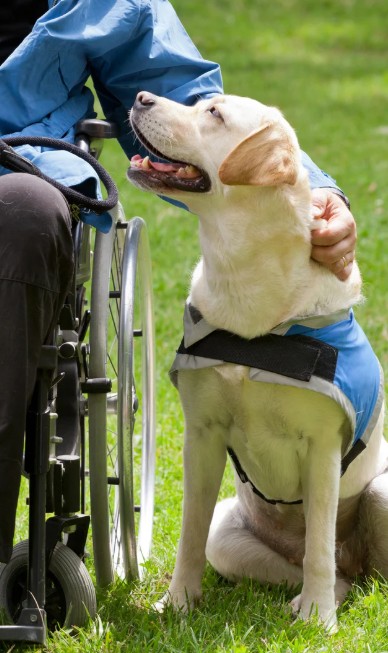
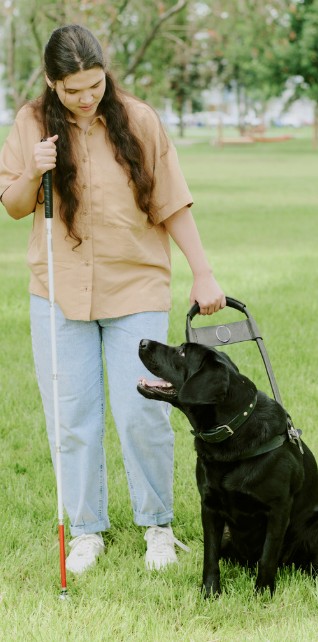
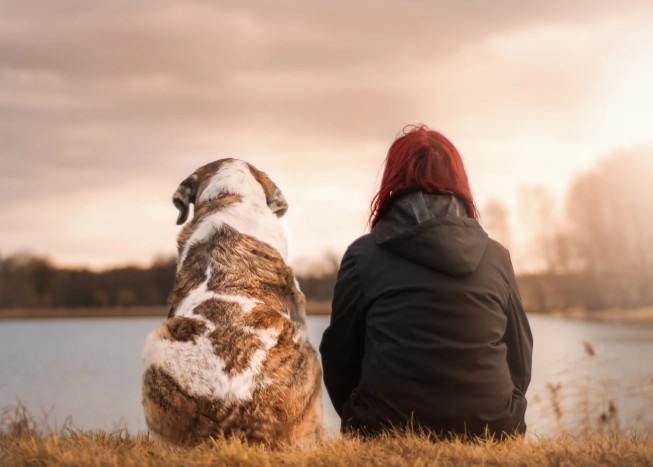
Partnerships transform lives. Each pairing reflects a bond that blends skill with affection, proving that these dogs are not just helpers but true allies in navigating and expanding human possibility.
Multi-Cultural & Multi-Faith Considerations: Navigating Diverse Contexts
Religious Considerations
The intersection of guide dog partnership with religious practice requires thoughtful navigation, balancing spiritual obligations with practical mobility needs. Understanding these dynamics helps you advocate respectfully while maintaining your independence rights.
Sacred Spaces and Ritual Purity: In some faith traditions, dogs are considered ritually impure, creating complex negotiations around guide dogs in places of worship. Many religious authorities have issued specific rulings (fatwas, responsa, pastoral guidance) clarifying that guide dogs are permitted as medical necessities. You might work with religious leaders to identify appropriate accommodations—designated seating areas, specific entrance routes, or ritual cleansing protocols that respect both religious law and your mobility needs.
Prayer and Working Time Management: Balancing religious observance with guide dog needs requires creative solutions. During extended prayer services, your dog needs occasional relief breaks. Some handlers arrange with religious communities for designated relief areas near places of worship. Others train their dogs to remain settled for extended periods, scheduling relief immediately before and after services. Building relationships with your faith community helps develop mutually respectful solutions.
Pilgrimage and Religious Travel: Religious pilgrimages present unique challenges. Some holy sites have developed specific protocols for guide dog teams—the Vatican, for instance, explicitly welcomes guide dogs. Research destination-specific religious authorities’ positions on guide dogs. Consider carrying religious rulings supporting guide dog use in appropriate languages. Connect with local disability organizations at pilgrimage sites who can provide cultural navigation support.
Cultural Navigation Strategies
Working with a guide dog in cultures where dogs aren’t traditionally kept as companions requires cultural sensitivity combined with confident self-advocacy.
Building Cultural Bridges: In societies where dogs are primarily viewed as working animals or unclean, your guide dog challenges cultural norms. Successful handlers report that education and relationship-building overcome initial resistance. Emphasizing your dog’s professional training, medical necessity, and working status (not pet status) helps shift perceptions. Wearing clear identification—harness signage in local languages stating “Working Guide Dog – Do Not Pet”—provides visual education.
Navigating Public Spaces: In some cultures, bringing any dog into food establishments or public transport seems unthinkable to locals. Carry translated documentation of guide dog access rights, but recognize legal rights don’t immediately change cultural reactions. Build relationships with regular establishments—once shopkeepers know you and observe your dog’s professional behavior, they often become advocates for guide dog access. Patient education typically succeeds better than confrontation.
Managing Cultural Curiosity: In regions where guide dogs are rare, you might face overwhelming public attention. Children may have never seen such a well-behaved dog. Adults might be skeptical that a dog can actually guide. Develop brief, culturally appropriate explanations. In some cultures, emphasizing the dog’s intelligence and training resonates; in others, focusing on independence and dignity proves more effective. Learn key phrases in local languages: “working dog,” “please don’t pet,” “thank you for understanding.”
Language Barriers and International Considerations
Guide dog teams increasingly navigate multilingual environments, requiring adaptive strategies for effective communication across language barriers.
Multi-Language Command Training: While your dog primarily responds to tone and gesture rather than specific words, consistency matters. Some handlers train dogs with commands in multiple languages from the start, particularly if they regularly travel between countries. Others maintain primary commands in one language but teach critical safety commands in additional languages. This proves valuable if emergency situations require someone else to control your dog.
Working with Interpreters: In medical, legal, or educational settings requiring interpreters, your guide dog adds complexity. Brief interpreters that your dog is medical equipment, not requiring translation or interaction. Position yourself so your dog isn’t between you and the interpreter, preventing distraction. Some handlers teach their dogs a “ignore” command for situations requiring extended interpretation, maintaining focus despite additional voices.
International Travel Realities: Beyond legal requirements, international travel with guide dogs involves cultural preparation. Research local attitudes toward dogs, availability of appropriate dog food, veterinary care accessibility, and relief area norms. Connect with guide dog schools or disability organizations in destination countries—they provide invaluable cultural context and practical support. Consider carrying a basic phrase card in local languages explaining your guide dog’s role and needs.
Immigrant Handler Experiences
Immigrating with a guide dog or obtaining a guide dog in a new country presents unique challenges requiring resilience and creativity.
Navigating New Systems: Healthcare systems, disability support structures, and guide dog organizations vary dramatically between countries. You might need to re-certify your dog’s training, navigate different funding models for veterinary care, or adapt to different public access laws. Connect with local guide dog user groups early—peer support provides practical system navigation strategies and emotional encouragement during transition.
Cultural Identity and Dog Partnership: Some immigrant handlers describe feeling caught between cultures—their heritage culture may not embrace human-dog bonds while their new country expects certain handler behaviors. Finding balance requires personal reflection and sometimes family education. Many handlers report that their guide dogs actually ease immigration stress, providing consistency and companionship during cultural adjustment.
Building Support Networks: Establishing support systems in a new country proves essential. This includes finding culturally sensitive veterinarians, identifying appropriate dog food sources (particularly if you maintain specific dietary restrictions), and building relationships with neighbors who can provide emergency support. Guide dog organizations often provide additional support for immigrant handlers, recognizing the unique challenges of navigating new cultural contexts while maintaining a working dog partnership.
Successor Dog Transition: Navigating Change with Grace
Timing the Transition
Recognizing when to begin planning for a successor dog requires honest assessment balanced with emotional readiness. This decision impacts not just you but your current dog and future partner.
Early Planning Indicators: Most handlers begin considering succession when their current dog shows consistent age-related changes. This doesn’t mean immediate retirement but rather strategic planning. Signs include decreased stamina on regular routes, increased recovery time after work, or subtle hesitation in previously confident situations. Beginning the application process early—often 12-18 months before anticipated retirement—ensures continuity of mobility.
The Application Dilemma: Applying for a successor dog while your current partner still works feels like betrayal to many handlers. Remember that guide dog schools understand this emotional complexity. Early application doesn’t commit you to immediate transition—it begins a process that can be adjusted based on your current dog’s continued capacity. Many schools maintain flexible timing, recognizing that each dog’s working longevity varies.
Assessing Emotional Readiness: Beyond practical considerations, emotional preparedness matters. Are you ready to divide attention between two dogs? Can you manage the grief of ending a working partnership while building a new one? Some handlers benefit from counseling during this transition, processing complex emotions with professional support. There’s no shame in needing time to prepare emotionally for this significant change.
Working with Two Dogs Temporarily
The overlap period—when your retiring dog still lives with you while you train with your successor—presents unique logistical and emotional challenges.
Logistical Management: Two dogs mean double everything: feeding stations, relief schedules, veterinary appointments, grooming needs. Establish separate spaces for each dog, preventing resource competition. Your retiring dog might feel displaced by the newcomer, while your new dog needs focused bonding time. Create schedules that provide individual attention for each dog while managing your own daily needs.
Preventing Confusion: Clear role delineation helps both dogs understand expectations. Your retiring dog might wear a different collar or bandana indicating “off duty” status. Maintain distinct commands or tones for each dog. Some handlers find success with temporal separation—mornings with the retiring dog for familiar routes, afternoons training with the successor on new paths. This prevents direct competition while honoring your retiring dog’s continued capability.
The Retired Dog’s Perspective: Your first dog might exhibit various reactions to their successor. Some show relief, happily relinquishing responsibility. Others display jealousy or confusion about their changed role. Watch for signs of depression—decreased appetite, withdrawal, excessive sleeping. Providing special privileges for your retired dog (sleeping on furniture, extra treats, leisure walks) helps them understand retirement brings benefits, not just loss.
Emotional Processing
The emotional complexity of successor dog transition rivals major life changes, yet receives little acknowledgment. Understanding these emotions normalizes the experience and facilitates healthy processing.
Anticipatory Grief: You might experience grief before your current partnership ends—mourning the approaching loss while your dog still works beside you. This anticipatory grief is normal and actually healthy, allowing gradual emotional adjustment. Don’t feel guilty about sadness; it honors the profound bond you’ve developed. Channel these emotions into creating positive final working experiences, building memories to treasure.
Loyalty Conflicts: Many handlers describe feeling disloyal to their retiring dog when bonding with their successor. You might hold back affection from your new dog, fearing it betrays your first partner. Remember that love isn’t finite—your heart expands to accommodate both relationships. Your retiring dog benefits from seeing you maintain independence with your successor, while your new dog needs full emotional investment to develop optimal working partnership.
Comparison Challenges: Inevitably, you’ll compare your dogs. Your first dog knows your routine, anticipates needs, requires no explanation. Your successor seems clumsy by comparison, missing “obvious” cues, requiring constant guidance. These comparisons are natural but unproductive. Remember your first dog’s early days—they too needed time to develop expertise. Focus on your new dog’s unique strengths rather than dwelling on differences.
What Changes with Dog #2, #3, and Beyond
Each successive partnership brings unique dynamics, shaped by your accumulated experience and changing life circumstances.
The Second Dog Advantage: Your second guide dog benefits from your experience. You understand training principles, recognize developmental stages, and maintain realistic expectations. The initial learning curve feels less steep because you’re not simultaneously learning to be a handler. However, you might also carry assumptions from your first partnership that don’t apply to your new dog. Remaining open to different communication styles and working patterns allows your second partnership to develop its unique character.
Evolving Partnerships: By your third or fourth dog, patterns emerge. You might notice you prefer certain breeds or temperaments. Your handling style has solidified, making certain dogs more compatible. Some veteran handlers describe partnerships becoming more professional—deep affection remains, but with less anxiety about the relationship. You trust the process, knowing that bonds develop with time and shared experience.
Life Stage Considerations: Each successor dog enters your life at a different stage. Your first dog might have accompanied you through career building, while your second navigates retirement. Physical changes affect partnership dynamics—an older handler might need a dog with different pacing or strength. Family circumstances evolve—children, grandchildren, caregiving responsibilities all influence how successor partnerships develop. Embracing these changes rather than expecting replication enriches each unique partnership.
Maintaining Bonds Across Transitions
Creating healthy dynamics between retired and working dogs requires intentional strategies that honor all relationships involved.
Structured Interaction Protocols: Establish clear patterns for how your dogs interact. Some retired dogs enjoy mentoring successors, while others prefer minimal contact. Supervised, positive interactions during non-working time—shared play sessions, parallel walks, calm coexistence during evening relaxation—help establish household harmony. Never force relationships; allow natural dynamics to develop while preventing conflict.
Individual Relationship Preservation: Maintain special one-on-one time with each dog. Your retired dog might enjoy leisurely morning walks while your working dog rests. Your successor dog needs focused training time without the retired dog’s presence. These individual moments strengthen specific bonds while preventing jealousy or competition.
Honoring the Continuing Bond: The relationship with your retired guide dog transforms but doesn’t end. They transition from working partner to beloved companion, offering different but equally valuable connection. Some handlers describe deeper emotional intimacy with retired dogs—freed from working responsibilities, the relationship becomes purely affectionate. Celebrate this evolution rather than mourning what changed. Your retired dog’s continued presence provides emotional continuity during the challenging transition to a new working partnership. 🧡

Communication & Working Partnership: The Language of Trust
Understanding Your Guide Dog’s Signals
The communication between you and your guide dog extends far beyond verbal commands. These remarkable animals develop a sophisticated signaling system that alerts you to environmental conditions, potential hazards, and navigation decisions.
Harness Communication: Through the rigid harness handle, your guide dog transmits subtle information about the environment. A slight upward pull indicates an upcoming curb, while lateral pressure suggests maneuvering around an obstacle. Experienced handlers describe this as “reading” their dog—interpreting minute changes in gait, tension, and movement patterns that convey complex environmental information.
Body Language Nuances: Even though you may not see your dog’s visual signals, you’ll learn to interpret physical cues through the harness and leash. A sudden stop might indicate an overhead obstacle you wouldn’t have detected. A hesitation before moving forward could signal uncertainty about a command or route. These subtle communications develop naturally as your partnership matures.
Vocal Indicators: While guide dogs work quietly, they may use specific vocalizations to communicate urgent information. A low whine might indicate discomfort or the need for a bathroom break. Some dogs develop unique signals for specific situations—a particular snuffle when they recognize a familiar location or a gentle nudge when they’ve found the door you’re seeking.
Building the Working Relationship
Trust Development: The foundation of successful guide dog partnership is mutual trust. You must trust your dog’s judgment about environmental hazards you cannot perceive, while your dog must trust your commands and decision-making. This trust doesn’t develop instantly; it grows through shared experiences, successful navigations, and overcoming challenges together.
Consistency in Commands: Your guide dog thrives on consistency. Using the same commands, maintaining regular routines, and providing predictable responses helps your dog understand expectations. This doesn’t mean rigidity—guide dogs adapt remarkably to schedule changes—but rather establishing clear communication patterns that both partners can rely upon.
The Balance of Work and Affection: While your guide dog is a working professional, they’re also a living being who needs affection, play, and downtime. Successful handlers master the art of transitioning between work mode and relaxation time. When the harness comes off, many guide dogs transform into playful companions, enjoying games and cuddles that strengthen the emotional bond underlying the working relationship.
Health & Wellness: Maintaining Your Partner’s Vitality
Nutritional Requirements for Working Dogs
Your guide dog’s nutritional needs differ from those of pet dogs due to their active working lifestyle and the cognitive demands of their job. Understanding these requirements helps ensure your partner maintains optimal health throughout their working years.
Caloric Considerations: Guide dogs typically require 20-30% more calories than sedentary pets of similar size. However, this varies based on working intensity, climate, and individual metabolism. You’ll need to monitor your dog’s body condition regularly, adjusting portions to maintain ideal weight. An overweight guide dog faces increased joint stress and reduced working longevity, while an underweight dog may lack the energy for sustained concentration.
Protein for Cognitive Function: Research suggests that working dogs benefit from higher protein levels than typical pet food provides. Quality protein supports muscle maintenance and may enhance cognitive function—crucial for the complex decision-making guide dogs perform daily. Look for foods where animal protein sources appear first in the ingredient list.
Feeding Schedule and Work Performance: Most handlers find that feeding smaller meals twice daily, rather than one large meal, maintains steady energy levels throughout working hours. Avoid feeding immediately before intensive work periods, as a full stomach can cause discomfort and reduced focus. Many handlers establish a routine: morning feeding after the first bathroom break, evening feeding after the day’s main work is complete.
Common Health Concerns and Preventive Care
Joint Health Management: The repetitive nature of guide work—constant walking, frequent standing and sitting, navigating stairs—places significant stress on joints. Proactive joint care becomes essential:
- Regular veterinary monitoring for early signs of arthritis
- Appropriate supplements (glucosamine, chondroitin) as recommended by your veterinarian
- Maintaining optimal weight to reduce joint stress
- Providing appropriate rest between intensive working periods
Eye and Ear Health: Ironically, while serving as your eyes, your guide dog needs regular vision checks. Age-related vision changes can affect their working ability. Similarly, ear health impacts their ability to respond to verbal commands and environmental sounds. Regular cleaning and veterinary checks prevent issues that could compromise working performance.
Stress-Related Health Issues: Research reveals that some working dogs experience physiological stress responses that can impact health. Signs include:
- Digestive issues (changes in appetite, irregular bowel movements)
- Skin conditions (excessive licking, hot spots)
- Behavioral changes (increased reactivity, decreased enthusiasm for work)
Understanding these signs helps you advocate for your dog’s welfare, potentially adjusting work schedules or seeking veterinary intervention before minor issues become serious problems.
Mental Health and Enrichment
Cognitive Stimulation Beyond Work: While guide work provides mental stimulation, your dog benefits from additional enrichment activities. Puzzle feeders, scent games during off-hours, and learning fun tricks unrelated to guide work can prevent cognitive decline and maintain mental flexibility.
Social Needs and Dog-Dog Interaction: Guide dogs sacrifice normal dog social interactions during working hours. Providing appropriate opportunities for supervised play with other dogs during off-hours supports emotional well-being. Many guide dog schools organize reunion events where working dogs can safely socialize with their peers.
Lifestyle & Environment: Creating the Ideal Partnership Setting
Home Environment Optimization
Your living space significantly impacts your guide dog’s ability to rest, recharge, and maintain working readiness. Creating an environment that supports both work and relaxation enhances your partnership’s success.
Designated Spaces: Establish clear zones within your home—a quiet sleeping area away from household traffic, a feeding station that remains consistent, and if possible, a play area where your dog can safely relax off-duty. These designated spaces help your dog understand when they’re “off the clock” and can fully relax.
Safety Considerations: Guide dogs, despite their training, remain curious animals. Secure potentially dangerous items (medications, toxic plants, small objects that could be swallowed) at heights your dog cannot reach. Remember, your guide dog spends more unsupervised time than most pets due to the independence their training provides.
Climate Control: Working dogs generate significant body heat during active periods. Ensure your home provides cool retreat spaces during warm weather and warm, draft-free areas during cold seasons. Some handlers install cooling mats or heated beds to help their dogs maintain comfort year-round.
Public Access and Social Navigation
Educational Interactions: When in public with your guide dog, you become an inadvertent educator. People’s curiosity about guide dogs creates teaching opportunities, though constant interactions can be exhausting. Develop polite but firm responses to common situations:
- Requests to pet your working dog
- Questions about your vision loss
- Comments about how well-behaved your dog is
- Misconceptions about guide dog capabilities
Restaurant and Retail Strategies: While legally protected, accessing businesses with your guide dog sometimes requires advocacy. Keep key information readily available:
- Knowledge of relevant laws (ADA in the US, similar legislation elsewhere)
- Clear, calm explanations of your rights
- Contact information for advocacy organizations if disputes arise
Most businesses welcome guide dogs once they understand the legal requirements and the dog’s professional training. Building relationships with regular establishments creates smoother experiences for both you and your dog.
Travel Considerations: Traveling with a guide dog requires additional planning but opens up independent exploration opportunities. Consider:
- Airline policies and documentation requirements
- Relief area locations in airports and train stations
- Accommodation confirmations that explicitly acknowledge your guide dog
- Backup supplies (food, medications) in case of travel delays
- Familiarity with guide dog rights in your destination country
Performance & Activities: Maximizing Your Team’s Potential
Advanced Navigation Skills
As your partnership matures, you and your guide dog can develop sophisticated navigation abilities that extend beyond basic training. These advanced skills emerge through practice, trust, and mutual understanding.
Route Learning and Memory: Your guide dog possesses remarkable spatial memory, often remembering routes after just a few repetitions. You might notice your dog anticipating turns on familiar paths or automatically stopping at your regular coffee shop. This cognitive mapping ability means your dog isn’t just following commands—they’re actively participating in navigation planning.
Intelligent Problem-Solving: Experienced guide dogs develop creative solutions to navigation challenges. If construction blocks a familiar route, your dog might independently choose an alternative path they’ve observed previously. This initiative, built on the foundation of intelligent disobedience, represents the highest level of guide dog performance.
Environmental Adaptation: Your guide dog learns to adjust their working style based on environmental conditions. They might walk closer in crowds, increase vigilance near traffic, or slow their pace on icy surfaces. These adaptations happen automatically, without specific commands, demonstrating sophisticated environmental assessment abilities.
Recreational Activities and Bonding
Off-Duty Exercise: While guide work provides physical activity, additional exercise during off-hours benefits both physical health and mental well-being. Activities might include:
- Free running in secure, familiar areas
- Swimming (for dogs who enjoy water)
- Fetch games that provide sprint intervals
- Hiking on familiar trails during non-working times
These activities strengthen your bond while maintaining your dog’s physical conditioning for work demands.
Mental Enrichment Games: Engage your guide dog’s problem-solving abilities with activities unrelated to guide work:
- Hide-and-seek games with favorite toys
- Scent discrimination exercises
- Teaching fun tricks that have no working application
- Food puzzles that challenge cognitive abilities
These games prevent mental stagnation and maintain cognitive flexibility essential for guide work.
Senior Care & Retirement: Honoring a Lifetime of Service
Recognizing Age-Related Changes
Your guide dog will typically work for 8-10 years, though this varies based on individual health and working demands. Recognizing when your partner needs to transition toward retirement requires careful observation and honest assessment.
Physical Indicators: Age-related changes that might signal approaching retirement include:
- Slower pace or reluctance to maintain previous walking speeds
- Hesitation at stairs or curbs previously navigated confidently
- Increased recovery time after intensive working periods
- Joint stiffness, particularly after rest periods
- Changes in stamina or endurance during routine routes
Cognitive Changes: Mental changes can be subtler but equally important:
- Increased distractibility or difficulty maintaining focus
- Confusion about familiar routes or commands
- Delayed response times to verbal cues
- Signs of anxiety in previously comfortable situations
- Decreased enthusiasm for work (though maintained affection for handler)
The Retirement Transition
Gradual Reduction: Rather than abrupt retirement, many teams benefit from gradually reducing working responsibilities. This might involve:
- Shorter working sessions with more frequent breaks
- Limiting work to familiar, less demanding routes
- Using the guide dog for specific tasks while using a cane for others
- Transitioning to a primarily companion role with occasional light work
This gradual transition helps both you and your dog adjust emotionally to changing roles while maintaining the bond you’ve developed.
Retirement Options: When full retirement becomes necessary, several options exist:
- Keeping your retired guide dog as a pet while working with a successor dog
- Returning the dog to the guide dog school for placement with adopters
- Placing the dog with family or friends who can provide appropriate care
- Transitioning the dog to lighter service roles if health permits
Each option presents emotional and practical considerations. Many handlers find keeping their retired guide provides continuity and allows them to honor the years of service, though managing two dogs (retired and working) requires additional resources and energy. 🧡
End-of-Life Considerations
Quality of Life Assessment: As your guide dog ages, regular quality of life evaluations become essential. Consider factors including:
- Pain levels and effectiveness of management strategies
- Ability to enjoy previously pleasurable activities
- Appetite and digestive function
- Social engagement and emotional well-being
- Dignity in daily functions
Veterinary partnerships become crucial during this phase, providing medical perspective to complement your intimate knowledge of your dog’s personality and preferences.
The Final Gift: Making end-of-life decisions for a guide dog who has given years of devoted service represents one of the partnership’s most challenging aspects. Many handlers describe this decision as their final act of love—preventing suffering for a partner who has prevented countless hardships for them. Support from guide dog schools, veterinarians, and fellow handlers can provide comfort during this difficult time.
Welfare & Ethical Considerations: Ensuring Wellbeing Throughout the Working Life
Understanding Working Dog Welfare
The welfare of guide dogs extends beyond basic care to encompass psychological, social, and emotional dimensions. Recent research reveals complex welfare considerations that responsible handlers must understand and address.
Stress and Coping Mechanisms: While guide dogs are selected and trained for resilience, they still experience stress. Research identifies several potential stressors:
- Lack of predictability in daily routines
- Overstimulation from well-meaning public attention
- Insufficient opportunities for species-typical behaviors
- Pressure to perform consistently despite fatigue or discomfort
Recognizing these stressors helps you implement mitigation strategies. Regular routines, protected rest periods, and opportunities for “dog” behaviors (sniffing, playing, socializing) support psychological wellbeing.
The Welfare-Performance Connection: Studies demonstrate clear links between welfare and working ability. Dogs experiencing chronic stress show decreased working performance, increased error rates, and potential behavioral problems. Prioritizing welfare isn’t just ethical—it’s essential for maintaining effective guide dog service.
Ethical Dimensions of the Partnership
Consent and Choice: Unlike human workers, guide dogs cannot explicitly consent to their role. This places profound ethical responsibility on handlers, trainers, and guide dog organizations to ensure these animals’ needs are met comprehensively. The fact that dogs appear willing to work doesn’t eliminate our obligation to regularly assess and protect their welfare.
Balancing Independence and Dog Welfare: Sometimes, your need for independence might conflict with your dog’s welfare needs. For instance, attending a lengthy event in a crowded, hot environment might be important for you but stressful for your dog. Developing strategies to balance these competing needs—perhaps alternating between dog and cane use, or building in rest breaks—demonstrates ethical partnership management.
Legal Framework & Social Dimensions: Navigating Rights and Responsibilities
Understanding Your Legal Rights
Legal protections for guide dog teams vary globally, but most developed nations provide comprehensive access rights. Understanding these protections empowers you to advocate effectively for yourself and your dog.
Access Rights in the United States: The Americans with Disabilities Act (ADA) provides robust protections:
- Guide dogs may accompany handlers in all public accommodations
- Housing providers must make exceptions to “no pets” policies
- Employers must provide reasonable accommodations for guide dog handlers
- Airlines must accommodate guide dogs in aircraft cabins
Importantly, these rights come with limited questioning. Businesses may only ask: (1) Is this a service animal? (2) What work or task has the dog been trained to perform? They cannot require documentation, demonstration of tasks, or payment of additional fees.
International Considerations: While many countries provide similar protections, specifics vary:
- European Union members generally provide comprehensive access rights
- Some nations require specific identification or certification
- Quarantine requirements may apply in certain countries
- Cultural attitudes toward dogs may affect practical access despite legal protections
Research destination-specific requirements before international travel to ensure smooth experiences.
Social Responsibility and Advocacy
Representing the Community: As a guide dog handler, you inadvertently represent all guide dog teams. Your dog’s behavior, your management strategies, and your interactions with the public influence perceptions and potentially affect access for future teams.
Educational Advocacy: Many handlers embrace educational roles, helping the public understand:
- Why working dogs shouldn’t be distracted
- How guide dogs differ from pets
- What training and selection these dogs undergo
- Why access rights are essential for independence
This education, while sometimes burdensome, helps create more inclusive communities for all guide dog teams.
Conclusion: Is a Guide Dog Right for You?
The decision to partner with a guide dog represents one of the most significant choices a person with vision loss can make. This partnership offers remarkable benefits—independence, confidence, companionship, and mobility—but also requires substantial commitment, responsibility, and lifestyle adjustments.
Consider these essential factors:
You might thrive with a guide dog if you:
- Enjoy walking and maintain an active lifestyle
- Feel comfortable with dog care responsibilities
- Can provide consistent routine and structure
- Have the emotional capacity to bond deeply with an animal
- Accept the public attention that comes with a guide dog
- Can manage the financial responsibilities of dog care
- Are prepared for the emotional challenge of eventual retirement and loss
You might prefer alternative mobility tools if you:
- Have allergies or fear of dogs
- Travel frequently to countries with restrictive animal importation laws
- Prefer minimal public interaction
- Have unstable housing or living situations
- Cannot commit to daily exercise and care routines
- Have other disabilities that might complicate dog handling
Remember, choosing a guide dog isn’t about replacing a white cane or other mobility aids—many handlers use multiple tools depending on circumstances. The guide dog becomes one part of a comprehensive approach to navigation and independence.
The partnership between humans and guide dogs represents something profound: two species communicating across the divide of language and perception to create something neither could achieve alone. These remarkable dogs offer not just their eyes but their judgment, intelligence, and devotion. In return, they ask for care, respect, and the opportunity to fulfill their trained purpose.
Whether you’re taking your first steps toward applying for a guide dog or simply seeking to understand these remarkable partnerships better, remember that every guide dog team’s journey is unique. The bond that develops between handler and dog transcends simple working relationships, creating partnerships built on mutual trust, respect, and often, profound love.
The path forward with a guide dog isn’t always easy, but for those who choose this journey, it offers rewards that extend far beyond mobility. It provides a constant companion who celebrates your successes, comforts you through challenges, and quite literally, helps you navigate the world with confidence and grace. In the end, guide dogs do more than guide—they transform lives, one step at a time. 🐾

